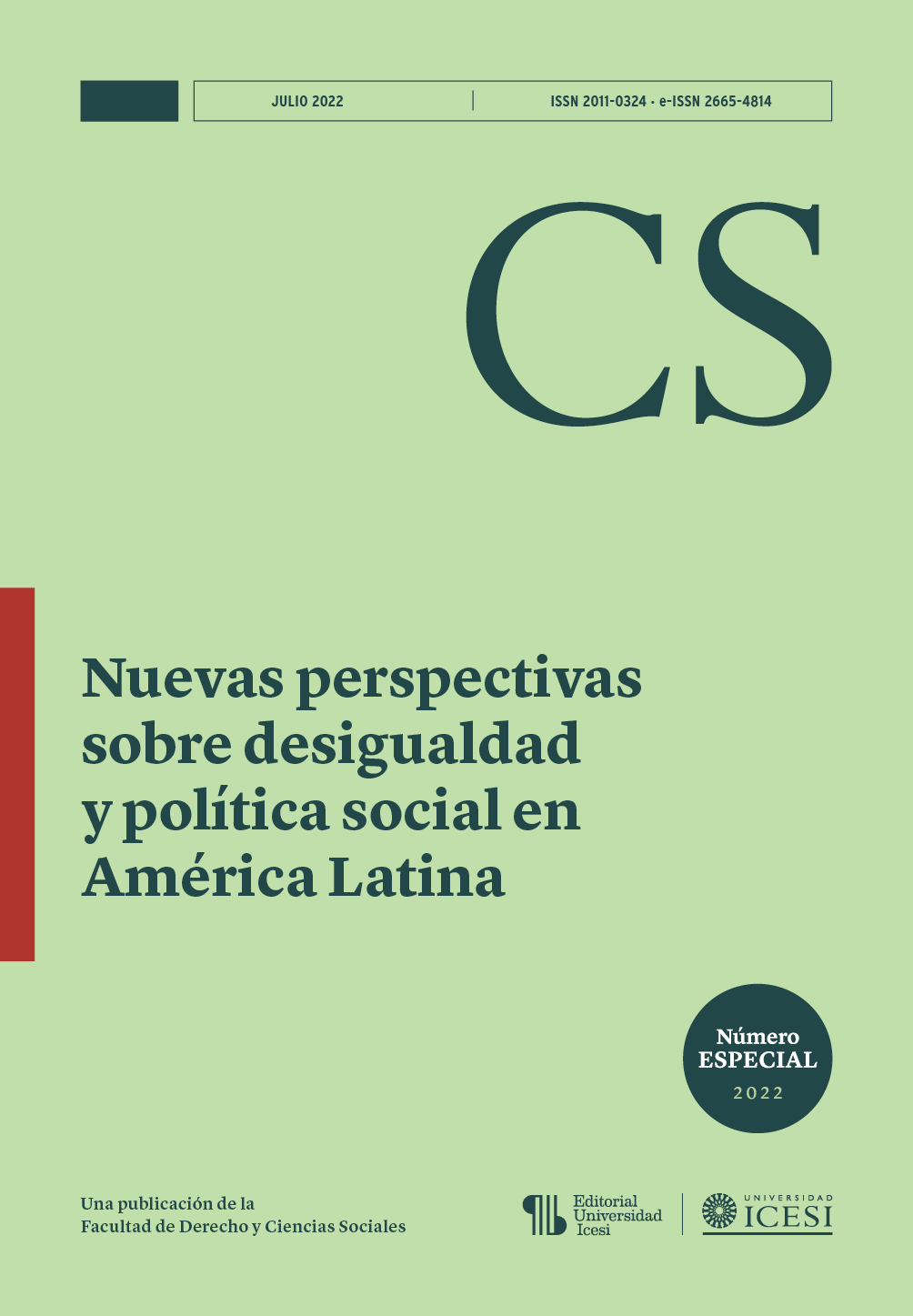The Determinants of Labor Income Inequality in Four Colombian Cities: Cartagena, Barranquilla, Bucaramanga, and Pereira, 2001-2021. Evidence from Quantile Regressions
DOI:
https://doi.org/10.18046/recs.iEspecial.4867Keywords:
Quantile Regressions, Wage Level and Structure, Wage Differentials, Education and InequalityAbstract
Using data from the Encuesta Continua de Hogares (DANE) between 2001 and 2006, and from the Gran Encuesta Integrada de Hogares (DANE) between 2007 and 2021, for the cities of Cartagena, Barranquilla, Bucaramanga, and Pereira, quantile regressions were estimated to find and classify the determinants of labor income inequality, according to the effect of each one on the income distribution scale. The main result of the study is that education and the percentage of self-employed workers have regressive effects on the labor income distribution in the four cities, thus increasing the scale of the distribution. The COVID-19 pandemic has a negative effect on mean and median income, as well as a regressive one on labor income distribution.
Downloads
References
Acemoglu, Daron; Johnson, Simon; Robinson, James (2001). The Colonial Origins of Comparative Development: An Empirical Investigation. The American Economic Review, 91(5), 1369-1401.
Aleán, Andrés (2010). Discriminación salarial por género en Colombia, 2008. Documento de trabajo de estudiantes N.° 4, Semillero de Investigación, Facultad de Economía. Bogotá: Universidad del Rosario. Recuperado de https://repository.urosario.edu.co/bitstream/handle/10336/3360/aleanromero_con_graficas.pdf?sequence=5&isAllowed=y
Badel, Alejandro; Peña, Ximena (2010). Decomposing the Gender Wage Gap with Sample Selection Adjustment: Evidence from Colombia. Revista de Análisis Económico, 25(2), 169-191.
Banco Mundial (2016). Taking on Inequality: Poverty and Shared Prosperity Report 2016. Washington: Publicaciones del Banco Mundial.
Cárdenas, Jeisson; Montana, Jaime; Bosworth, Derek (2021). Which Workers are Most Exposed to covid-19 and Social Distancing Effects in a Dual Labour Market? Revista de Economía del Rosario, 24(2), 1-44.
Fernández-Val, Iván; van Vuuren, Aico; Vella, Francis (2018). Decomposing Real Wages in the United States. IZA Discussion Paper Series, 12044, 1-66.
Ferreira, Francisco; Firpo, Sergio; Messina, Julián (2021). Labor Market Experience and Falling Earnings Inequality in Brazil: 1995-2012. The World Bank Economic Review, 1-31.
Fournier, Jean-Marc; Koske, Isabell (2012). The Determinants of Earnings Inequality: Evidence from Quantile Regressions. OECD Journal: Economic Studies, 2012(1), 7-36.
Galvis, Luis (2010). Diferenciales salariales por género y región en Colombia: Una aproximación con regresión por cuantiles. Revista de Economía del Rosario, 13(2), 235-277.
Hao, Lingxin; Naiman, Daniel (2007). Quantile Regression. Thousand Oaks: Sage.
Joumard, Isabelle; Londoño, Juliana (2013). Income Inequality and Poverty in Colombia. OECD Economics Department Working Papers, 1036, 1-30.
Koenker, Roger; Bassett, Gilbert (1978). Regression Quantiles. Econometrica, 46(1), 33-50.
Otero-Bahamón, Silvia (2016). When the State Minds the Gap: The Politics of Subnational Inequality in Latin America [tesis de doctorado]. Northwestern University.
Vargas, Carmiña (2011). Desigualdad de salarios en Colombia: evidencia a partir de encuestas de hogares 1984-2010. Borradores de Economía, Banco de la República, 661, 1-59.
Downloads
Published
Issue
Section
License
Copyright (c) 2022 Andrés Aleán Romero

This work is licensed under a Creative Commons Attribution-NonCommercial 4.0 International License.
© Reserved Copyright
Material in this publication may be reproduced without authorization, provided the title, author and institutional source is acknowledged.
The content published in Revista CS is distributed under the Creative Commons BY-NC 4.0 Attribution/Recognition-NonCommercial 4.0 International license.
You are free to:
Share — copy and redistribute the material in any medium or format.
Adapt — remix, transform, and build upon the material.
Under the following terms:
Attribution — You must give appropriate credit , provide a link to the license, and indicate if changes were made . You may do so in any reasonable manner, but not in any way that suggests the licensor endorses you or your use.
NonCommercial — You may not use the material for commercial purposes.












